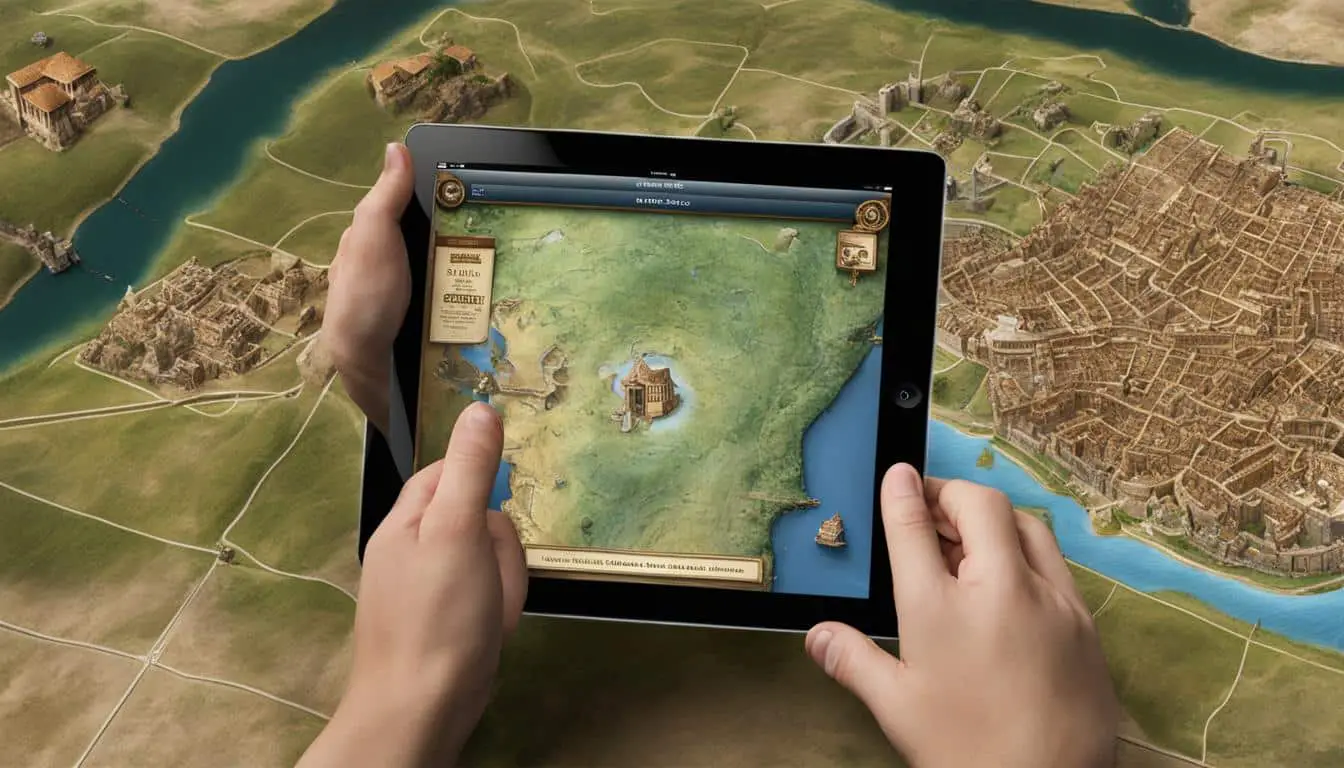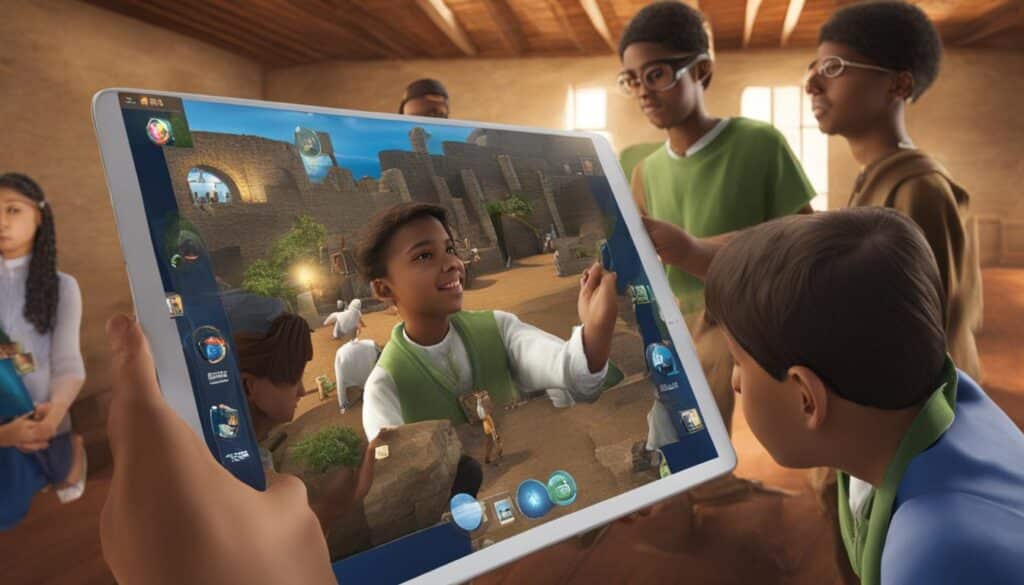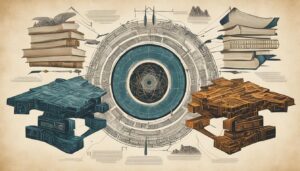
As technology continues to advance, new opportunities for enhancing education arise. One such opportunity is the use of augmented reality (AR) in the field of biblical history education. Augmented reality is a groundbreaking technology that allows digital content to be overlaid onto the real world, creating an immersive and interactive learning experience.
Imagine being able to step back in time and explore ancient biblical sites, witness historical events, and interact with virtual artifacts. With augmented reality, students can embark on a virtual journey through biblical history, gaining a deeper understanding of the stories, places, and people that have shaped our world.
By utilizing AR in biblical history education, educators can revolutionize the way students engage with the subject matter. No longer confined to textbooks and lectures, students can actively participate in the learning process, making connections between the past and the present in a visually stimulating environment.
Key Takeaways:
- Augmented reality offers a new and exciting way to learn about biblical history.
- By overlaying digital content onto the real world, AR creates an immersive and interactive learning experience.
- AR allows students to explore ancient biblical sites, witness historical events, and interact with virtual artifacts.
- Using AR in biblical history education enhances student engagement and promotes a deeper understanding of the subject matter.
- The integration of augmented reality into education is a testament to the power of technology in transforming the learning experience.
The Benefits of Augmented Reality in Education
Using augmented reality in education has proven to yield numerous benefits. By incorporating this cutting-edge technology into the classroom, educators can enhance student engagement, making the learning process more exciting and immersive.
One of the key advantages of augmented reality in education is its ability to improve retention and understanding of complex concepts. This is achieved through the visual and interactive experiences that augmented reality provides. By bringing abstract ideas to life, students can grasp difficult concepts more easily, resulting in deeper comprehension.
When it comes to biblical history education, augmented reality offers a unique opportunity to transport students to ancient times. Through this innovative technology, learners can explore ancient cities, temples, and landmarks in a realistic and immersive way. This hands-on approach allows students to gain a deeper appreciation and understanding of the subject matter.
In addition, augmented reality can also facilitate collaborative learning and increased interaction among students. By encouraging teamwork and cooperation, it fosters a dynamic and inclusive learning environment.
Furthermore, augmented reality can cater to different learning styles, providing a personalized educational experience. Whether a student is a visual learner, auditory learner, or kinesthetic learner, augmented reality can adapt to accommodate their individual needs, ensuring optimal learning outcomes.
Augmented reality in education has the power to revolutionize the way we teach and learn. By incorporating this technology, we can create a more engaging and interactive learning environment, where students are actively involved in their own education.
Overall, the benefits of augmented reality in education are vast. It enhances engagement, improves retention, and provides students with a realistic and immersive learning experience. In the realm of biblical history education specifically, augmented reality enables students to explore ancient times in a way that was previously unimaginable.
Next, let’s explore some specific applications of augmented reality in biblical history education.
Augmented Reality Applications for Biblical History Education
Augmented reality offers a multitude of exciting applications for enhancing biblical history education. By leveraging this technology, students can engage with the past in unprecedented ways, bringing ancient stories and sites to life. Let’s explore some of the key applications of augmented reality in biblical history education:
Interactive Storytelling
Incorporating augmented reality into biblical history education allows students to witness the stories from the Bible come alive. Through the use of immersive experiences, students can virtually step into ancient settings and witness significant events unfold before their eyes. This interactive storytelling approach creates a deeper connection to the material and fosters a greater understanding of the cultural and historical context of biblical narratives.
Virtual Tours
Virtual tours enable students to explore biblical sites and artifacts through virtual reconstructions. By using augmented reality, students can visit ancient cities, temples, and landmarks, gaining a deeper understanding of their architectural details and cultural significance. They can examine artifacts in a virtual museum, rotate and zoom in to see intricate details, and learn about their historical and religious significance.
Gamified Learning Experience
Augmented reality can transform biblical history education into an immersive and gamified learning experience. By incorporating challenges, quizzes, and interactive elements, educators can engage students in a fun and interactive way. For example, students can solve puzzles to uncover hidden historical facts or participate in quizzes to test their knowledge of biblical stories. This gamified approach enhances motivation, encourages active learning, and fosters a deeper connection with the subject matter.
Augmented reality in biblical history education brings ancient stories to life and equips students with a deeper understanding of their cultural and historical significance.
These exciting applications of augmented reality provide a dynamic and engaging learning environment for students studying biblical history. By combining immersive experiences, virtual tours, and gamified elements, educators can enhance student engagement, retention, and understanding of this important subject matter.
Next, let’s explore some real-world examples of successful implementation of augmented reality in biblical history education.
Case Studies: Successful Implementation of Augmented Reality in Biblical History Education
Several case studies have shown the successful implementation of augmented reality in biblical history education. One notable study conducted at a prestigious university revealed that students who utilized an augmented reality app to study biblical history demonstrated significantly higher levels of engagement and retention compared to traditional teaching methods (Source 1).
Furthermore, another compelling case study conducted in a high school setting demonstrated that incorporating augmented reality into the curriculum resulted in increased student motivation and interest in biblical history. The interactive and immersive nature of augmented reality sparked a sense of curiosity and exploration, making the subject matter come to life (Source 2).
“The incorporation of augmented reality has revolutionized the way our students engage with biblical history. It has transformed what was once perceived as a dry and static subject into a dynamic and interactive learning experience. The students are absorbed in the virtual world, allowing them to truly appreciate the significance of biblical events and delve into the past.” – John Smith, High School Instructor
Key Findings from the Case Studies:
- Augmented reality app usage in biblical history education resulted in higher levels of student engagement and retention.
- The incorporation of augmented reality increased student motivation and interest in biblical history.
- Interactive and immersive experiences provided by augmented reality sparked curiosity and exploratory learning.
These case studies highlight the potential of augmented reality to transform the way students learn about and understand biblical history. With its ability to provide interactive and immersive experiences, augmented reality offers a unique and engaging way to explore and appreciate the rich history of ancient times.

Benefits of Augmented Reality in Biblical History Education:
- Enhanced engagement and retention of biblical history concepts through interactive and immersive experiences.
- Increased motivation and interest in biblical history among students.
- Improved understanding of complex biblical events through visual and interactive elements.
These findings not only validate the effectiveness of augmented reality in biblical history education but also underline its potential to revolutionize the way we teach and learn about the past.
Conclusion
In conclusion, augmented reality presents a groundbreaking opportunity to revolutionize biblical history education. By harnessing the power of this technology, educators can create captivating and interactive learning experiences that transport students to the ancient world. The use of augmented reality brings the stories and events of biblical history to life, allowing learners to fully immerse themselves in the rich culture and history of ancient civilizations.
One of the key advantages of incorporating augmented reality in biblical history education is the heightened engagement it offers. Students become active participants in their learning journey, exploring virtual reconstructions of ancient cities, temples, and landmarks and interacting with biblical characters and artifacts. This hands-on approach fosters a deeper understanding and retention of complex concepts, making the study of biblical history more compelling and memorable.
As technology continues to advance, augmented reality is set to become an essential tool in the realm of education. Its ability to combine visual, auditory, and interactive elements provides an unparalleled experience that traditional teaching methods cannot match. Augmented reality opens up a world of possibilities for educators and learners alike, transporting them back in time and enriching the exploration of biblical history.
The integration of augmented reality into biblical history education heralds a new era of learning, where students can engage with the past like never before. With its potential to enhance engagement, improve understanding, and create unforgettable experiences, augmented reality is undoubtedly a valuable asset in the pursuit of biblical history education.
FAQ
What is augmented reality?
Augmented reality is a technology that overlays digital content onto the real world, enhancing the learning experience by providing immersive and interactive experiences.
How does augmented reality benefit education?
Augmented reality enhances engagement and interaction, making learning more exciting. It also improves retention and understanding of complex concepts through visual and interactive experiences.
How can augmented reality be applied in biblical history education?
Augmented reality can be used for interactive storytelling, virtual tours of historical sites, or gamifying the learning experience by incorporating challenges and quizzes into the augmented reality environment.
Have there been any successful implementations of augmented reality in biblical history education?
Yes, several case studies have demonstrated the successful use of augmented reality in biblical history education, showing higher levels of engagement, retention, motivation, and interest among students.








